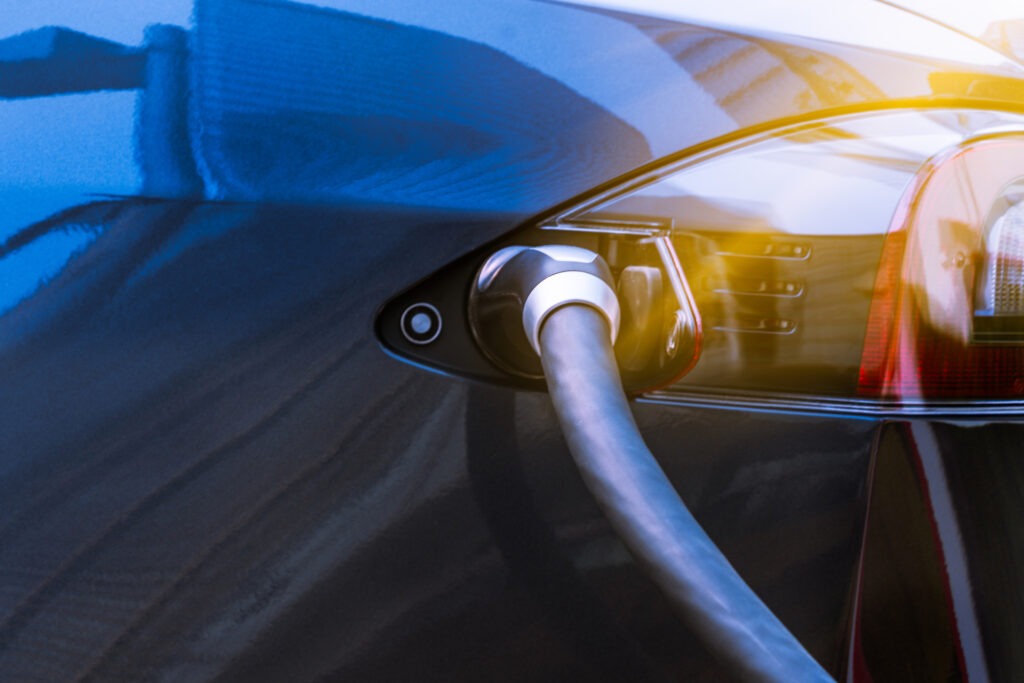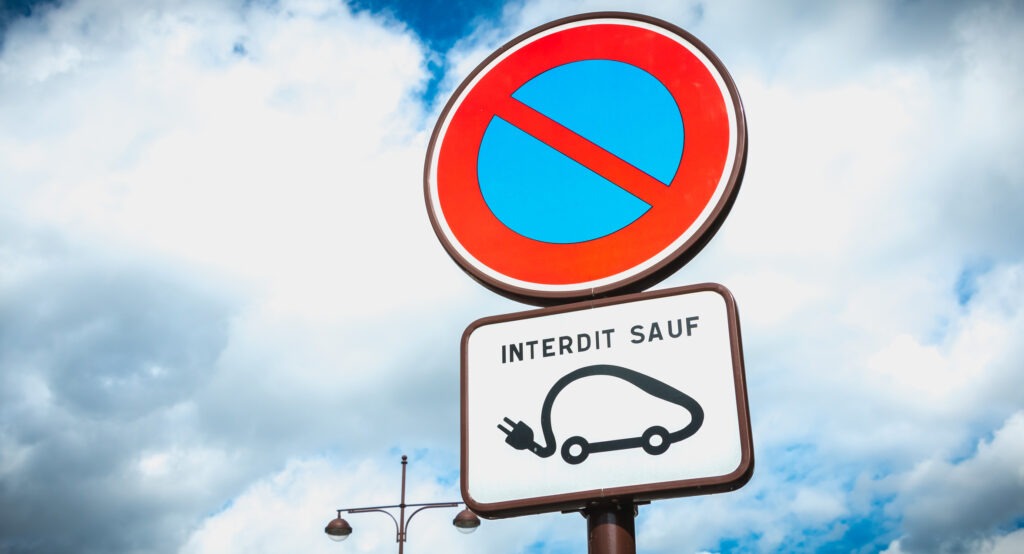More than a third of registrations in China come from plug-in vehicles
13 June 2023

The Chinese automotive market continues to lead the world in plug-in vehicle registrations. José Pontes, data director at EV-volumes.com, examines the market in detail.
Plug-in vehicles are performing very well in the Chinese automotive market, with over half a million registrations in April, up 93% year on year. This brought the total tally between January and April to over 1.9 million units.
Share-wise, with April recording another strong performance, plug-in vehicles hit a 35% market share. Battery-electric vehicles (BEVs) alone accounted for 24% of the country’s registrations. This took the 2023 plug-in share so far to 33%, 23% of which were BEVs.
Considering the current growth rate, it can be assumed that China’s plug-in vehicle market share will sit at around 40% by the end of 2023. Another measure of the importance of the Chinese market is the fact that the country alone represented over half of global plugin registrations in April.
Looking at the month’s best sellers in the overall market, plug-in vehicles populated most of the top 10, taking six spots, four of which were in the top five. In this zone, the only internal-combustion engine (ICE) model was the Nissan Sylphy.
Considering best sellers by category, certain segments appear to be electrifying far more rapidly. While city cars (A-segment) and the midsize category (D-segment) are heavily electrified, compacts (C-segment) and full size (E-segment) still have some work to do.
As for the B-segment (subcompacts), for some reason, the Chinese are not as invested in this category, so the only volume seller has been the BYD Dolphin. But now the Wuling Bingo is looking to break BYD’s domination, while the remaining competition lags behind.
Dominance in the top 10
Thanks to a recent refresh, and seemingly mandatory price cut, the BYD Qin Plus surprised many by beating its Song sibling and taking the top spot in April. The midsize vehicle reached 40,003 registrations in April, 8,718 of which were BEVs. This allowed BYD to win all three podium positions.
With prices now starting at ¥100,000 (€13,137), demand spiked again, despite the strong internal competition (the BYD Seal for the BEV version and the Destroyer 05 for the PHEV version). The lower-priced midsize sedan should have no problem keeping its most direct competitors, the Tesla Model 3 and GAC Aion S, at a safe distance.
BYD’s midsize SUV, the Song, was second in the Chinese automotive market, scoring 36,836 registrations, 4,600 of them belonging to the BEV version. Whether the Song ends the year as China’s best-selling model depends on the competition, especially from its stablemates.
The Song only has the recently introduced BYD Frigate 07 PHEV as internal competition, but the upcoming Sea Lion (BYD’s take on the Tesla Model Y) and the premium Denza N7 are both set to land this year. This could be too much competition inside BYD’s midsize SUV portfolio. The Song sits in as the lower-priced model, the Frigate 07 and Sea Lion as mid-priced models, and finally the more upmarket Denza N7.
The current wave of price cuts will also be a decisive factor. BYD just reduced the prices of its Song, as it did with the Qin Plus. The question remains if this will all be enough to ensure the Song continues clocking 40,000 to 50,000 sales a month, a necessary threshold to continue leading the cutthroat Chinese market.
The small-to-compact BYD Dolphin scored 29,961 registrations, a new record, to sit third in April’s registrations table. In the past, the Dolphin had the small hatchback class all to itself, as its direct competitors were selling significantly less. This success is now going to be tested by the recently introduced Wuling Bingo, which clocked 15,011 registrations in April. However, questions remain on whether the JAC Yiwei 3, which could receive sodium batteries later this year, will become another successful challenger.
With a record 28,931 registrations last month, the BYD Yuan Plus is expanding its domestic sales, putting it fourth in the overall automotive market. The compact EV is just starting its career in several new markets and is yet to land in many more. Whether it continues to perform well in China remains to be seen, considering the current price war and increasing levels of competition (the upcoming Zeekr X being one of many). BYD may look to increase production for export markets, where competition is more stable, and margins are higher.
Tesla’s Model Y garnered 26,760 registrations and considering April was an off-peak month, this can be considered a positive result. Price cuts have worked well for the crossover, with the midsize vehicle running at the same pace as the best of the BYD pack. Removing the monthly peaks and troughs by reviewing the Model Y’s first quarter sales on an average basis, the BEV ended the period on a 31,500 unit/month average, a great result for a foreign model in China. In a time when Chinese carmakers are in peak form, Tesla is currently the only foreign OEM capable of following the increasing pace of domestic carmakers.
Below BYD and Tesla, GAC’s Aion S and Aion Y continue to impress, with the latter beating its sedan sibling with a record 21,065 registrations. Below GAC’s models, there was another duo, this time coming from Wuling. But while the Wuling Bingo is off to a great start in ninth, the Mini EV has had its third-worst month ever in eighth.
It seems the competition coming from the Geely Panda Mini (13th with 10,615 units, its third record score in a row) and the arrival of its larger Wuling Bingo brother is making a dent in Wuling Mini EV sales. With Wuling recently cutting the price of its Mini EV, the carmaker hopes to revive the sales of its smallest and cheapest offering.
In the second half of the table, the Denza D9 came in 14th, scoring a record 10,526 registrations thanks to record performances from both its versions. In 15th, the Li Auto L7 crossed into five-digit registration figures in only its second month on the market (10,486 registrations). It seems the hot startup brand has another winner on its hands.
But the other Li Auto models saw declines in April. No doubt, some cannibalisation is at play, but over 20,000 sales a month in the full-size category is nothing to be sad about. After all, that is almost as much as BYD achieves in the category with the Han and Tang.
Last month, neither BYD’s Seal (6,323 units) nor its Destroyer 05 (5,133 units) reached the top 20. On the other hand, in 16th, the Frigate 07 continued production increase with the PHEV reaching 10,042 deliveries last month.
Outside the top 20, the highlights were the recovery of models like the Zeekr 001 (6,463 units), which could return to the table soon — once the new Qilin battery versions reach significant production. The VW ID.4 (5,240 units) had its best result so far this year, so there might be some hope for the German crossover after all.
Meanwhile, Leapmotor’s C11 midsize SUV scored a record 6,146 registrations, no doubt helped by the introduction of a range-extended version (3,677 units in April) that is now sold along the regular BEV model.
At the end of the month, the much-hyped BYD Seagull finally landed, which had 1,500 registrations in those few days, no doubt demonstration units. It will be interesting to examine May’s figures to see if its first volume month will make an impact in the table.
BYD leads
Looking at the rankings between January and April 2023, the BYD Song is well above the competition, with the Tesla Model Y in second, resisting the third-placed BYD Qin Plus’ strong month.
Below the top three, the highlights were the BYD Dolphin reaching fifth position, switching places with the Wuling Mini EV and placing four BYDs in the top five positions. The GAC Aion Y was up one spot, to 10th, an impressive standing for the compact MPV-disguised-as-a-crossover.
In the second half of the table, the Geely Panda Mini jumped four positions to 14th, and the BYD Frigate 07 also shot up four spots to 15th. A few positions below, the midsized Changan SL03 was up one spot, to 19th. Finally, in 21st, the Wuling Bingo, which should join the table in May, has the potential to keep climbing.
No major brand movement
Looking at the brand rankings, there is no major movement in the Chinese market. BYD (35.7% market share, down from 36.4%) remains stable in its leadership position and is looking to win its 10th plug-in carmaker title this year, while Tesla (9.3%, down from 10%) is stable in second place.
After a long period of sliding sales, the SGMW joint venture is starting to build back and has stopped recent trends of dropping market share by holding 5.9% in April. But that was not enough to stop the rising GAC Aion (6.3% share, up 0.4%) from taking its bronze medal position. Finally, Changan (4.3% share, down from 4.5%) is in fifth but lost ground to the rising sixth-place Li Auto (4.1%, up from 3.9%).
Looking at OEMs, automotive groups and alliances, BYD is comfortably leading with a 38.1% share of the market, while in second, Tesla (9.3%) also remains stable. With the SAIC mothership still in crisis, the new Wuling Bingo was not enough to stop the current sales slide. The Shanghai-based OEM once again lost share (7.6%, down from 7.8%).
If SAIC does not stop this descent soon, those groups behind will surely surpass it, as the most immediate competitors are consistently rising. In fourth, GAC profited from the brilliant performances of its dynamic duo to jump from a 6.1% share to 6.6% in April. One step down, Geely–Volvo keeps rising (5.3% share, up from 5%) thanks to the recent success of the Geely Panda Mini.
In Sixth, Changan lost ground (4.6% share, down 0.3%), allowing Geely to rest on its laurels. The ‘Chinese Volkswagen Group’ is still performing better than the actual Volkswagen Group. Still, the German company is looking to recover relevance in China, having recently recovered some share. In April, it saw its share grow from 2.6% to 2.8%.



